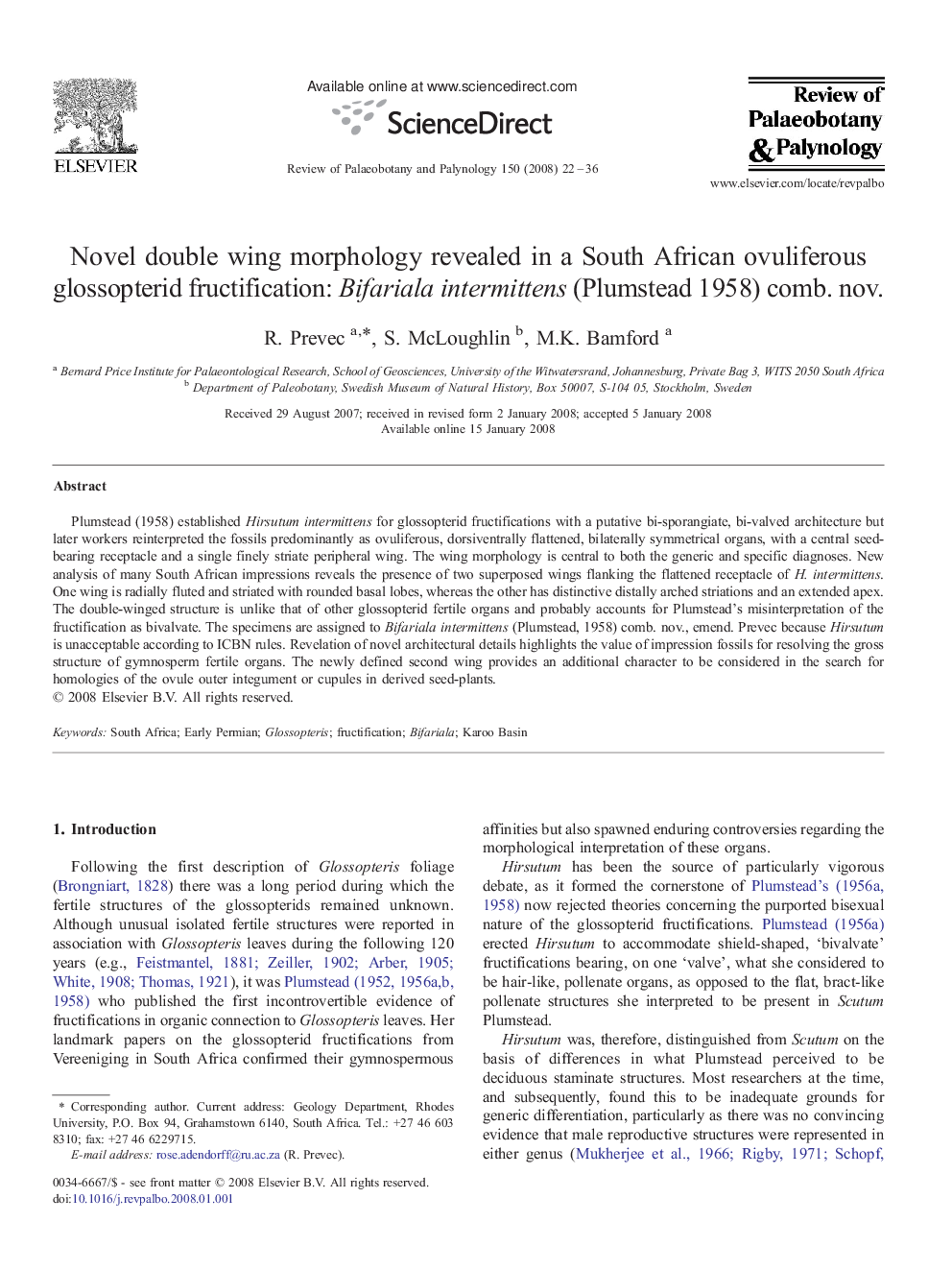| Article ID | Journal | Published Year | Pages | File Type |
|---|---|---|---|---|
| 4750952 | Review of Palaeobotany and Palynology | 2008 | 15 Pages |
Abstract
Plumstead (1958) established Hirsutum intermittens for glossopterid fructifications with a putative bi-sporangiate, bi-valved architecture but later workers reinterpreted the fossils predominantly as ovuliferous, dorsiventrally flattened, bilaterally symmetrical organs, with a central seed-bearing receptacle and a single finely striate peripheral wing. The wing morphology is central to both the generic and specific diagnoses. New analysis of many South African impressions reveals the presence of two superposed wings flanking the flattened receptacle of H. intermittens. One wing is radially fluted and striated with rounded basal lobes, whereas the other has distinctive distally arched striations and an extended apex. The double-winged structure is unlike that of other glossopterid fertile organs and probably accounts for Plumstead's misinterpretation of the fructification as bivalvate. The specimens are assigned to Bifariala intermittens (Plumstead, 1958) comb. nov., emend. Prevec because Hirsutum is unacceptable according to ICBN rules. Revelation of novel architectural details highlights the value of impression fossils for resolving the gross structure of gymnosperm fertile organs. The newly defined second wing provides an additional character to be considered in the search for homologies of the ovule outer integument or cupules in derived seed-plants.
Related Topics
Physical Sciences and Engineering
Earth and Planetary Sciences
Palaeontology
Authors
R. Prevec, S. McLoughlin, M.K. Bamford,
